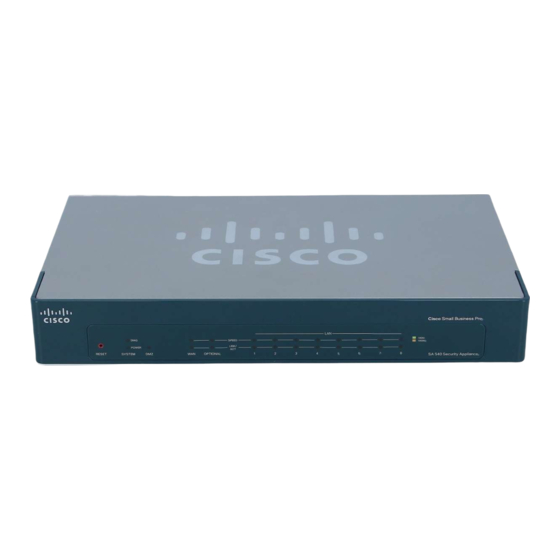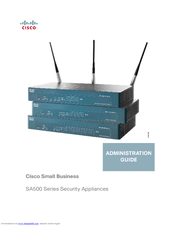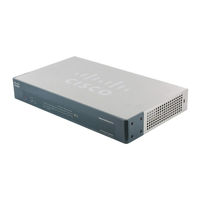
Cisco Small Business Pro SA 520W Manuals
Manuals and User Guides for Cisco Small Business Pro SA 520W. We have 3 Cisco Small Business Pro SA 520W manuals available for free PDF download: Administration Manual
Cisco Small Business Pro SA 520W Administration Manual (240 pages)
SA500 Series Small Business Security Appliances
Brand: Cisco
|
Category: Network Hardware
|
Size: 3.52 MB
Table of Contents
-
-
-
Front Panel11
-
Rear Panel12
-
Installation13
-
Basic Tasks23
-
-
-
Routing67
-
Dynamic DNS76
-
-
MLD Tunnels87
-
-
-
Port Triggering121
-
Sip129
-
-
About VPN136
-
-
-
-
Users171
-
Diagnostics180
-
-
Ipv6 Logging187
-
Remote Logging188
-
-
-
-
Device Status204
-
VPN Status210
-
Ipsec VPN Status210
-
SSL VPN Status211
-
Quick VPN Status212
-
-
Active Users213
-
View Logs213
-
View All Logs213
-
Ipsec VPN Logs215
-
Protectlink Logs215
-
-
CDP Neighbor215
-
LAN Devices216
-
Reports216
-
-
-
General Settings229
-
Router Settings231
-
Storage237
-
Advertisement
Cisco Small Business Pro SA 520W Administration Manual (244 pages)
SA 500 Series Security Appliances Administration Guide
Brand: Cisco
|
Category: Network Router
|
Size: 5.87 MB
Table of Contents
-
-
-
Front Panel11
-
Rear Panel12
-
Installation13
-
Basic Tasks25
-
-
-
Routing83
-
Dynamic DNS91
-
-
Routing (Ripng)100
-
6To4 Tunneling101
-
ISATAP Tunnels102
-
MLD Tunnels103
-
Enabling 802.1P107
-
802.1P Mapping107
-
DSCP Remarking108
-
-
-
Port Triggering139
-
Sip147
-
-
About VPN153
-
-
-
-
Users191
-
Maintenance197
-
Diagnostics204
-
-
Ipv6 Logging209
-
Remote Logging210
-
Logs Facility211
-
-
-
-
General Settings233
-
Router Settings235
-
Storage240
-
Cisco Small Business Pro SA 520W Administration Manual (241 pages)
Small Business Pro SA 500 Series Security Appliances
Table of Contents
-
-
-
Front Panel11
-
Rear Panel12
-
Installation13
-
Basic Tasks25
-
-
-
Routing81
-
Dynamic DNS89
-
-
MLD Tunnels100
-
Enabling 802.1P104
-
802.1P Mapping104
-
DSCP Remarking105
-
-
-
Port Triggering135
-
Sip143
-
-
About VPN149
-
-
-
-
Users184
-
Maintenance189
-
Diagnostics196
-
-
Ipv6 Logging202
-
Remote Logging203
-
Logs Facility204
-
-
-
-
General Settings229
-
Router Settings231
-
Storage236
-
Advertisement


